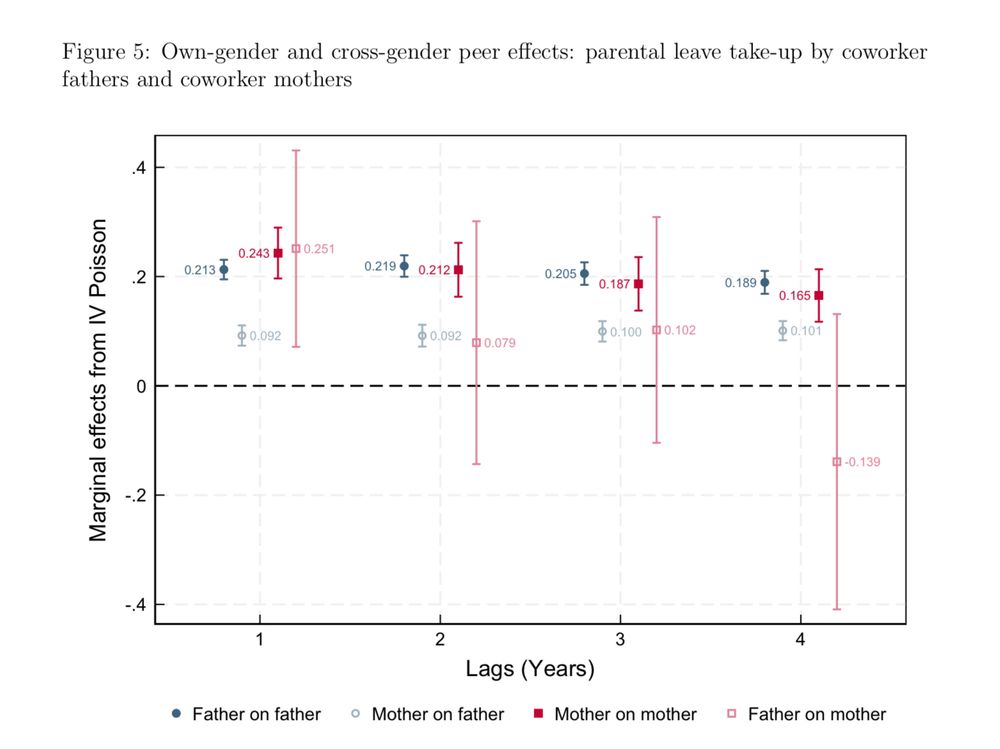
Male partners are instead almost unaffected by PL take-up of mothers.🟡
10/N

Male partners are instead almost unaffected by PL take-up of mothers.🟡
10/N
9/N

9/N
8/N
8/N
However own-gender effects are stronger than cross-gender ones, indicating that peers more than the general firm environment influence our results.
7/N

However own-gender effects are stronger than cross-gender ones, indicating that peers more than the general firm environment influence our results.
7/N
6/N

6/N
5/N
5/N
We measure their exposure to the reform by the ex-ante share of eligible “peer” fathers (i.e. share of 3-5 y.o. fathers over total fathers employed in establishment)
4/N
We measure their exposure to the reform by the ex-ante share of eligible “peer” fathers (i.e. share of 3-5 y.o. fathers over total fathers employed in establishment)
4/N
3/N

3/N
We exploit a reform in 🇮🇹 that increased parental leave (PL) generosity for parents of 3-5 year old children.👨🍼👩🍼
Before reform: no replacement rate 😢
After reform: 30% replacement rate 💰
2/N
We exploit a reform in 🇮🇹 that increased parental leave (PL) generosity for parents of 3-5 year old children.👨🍼👩🍼
Before reform: no replacement rate 😢
After reform: 30% replacement rate 💰
2/N
Comments welcome!
[5/5]
Comments welcome!
[5/5]
[4/5]


[4/5]
▶️Top ranks in firms are increasingly more occupied by older workers.
▶️Younger men have more to lose as they were more represented in top jobs than younger women at baseline
[3/5]
▶️Top ranks in firms are increasingly more occupied by older workers.
▶️Younger men have more to lose as they were more represented in top jobs than younger women at baseline
[3/5]
Convergence happened as
1️⃣ newer worker cohorts w/ lower-than-avg pay gaps replaced older ones w/ higher-than-avg gaps
2️⃣ younger men fared progressively worse at lab mkt entry
[2/5]


Convergence happened as
1️⃣ newer worker cohorts w/ lower-than-avg pay gaps replaced older ones w/ higher-than-avg gaps
2️⃣ younger men fared progressively worse at lab mkt entry
[2/5]

